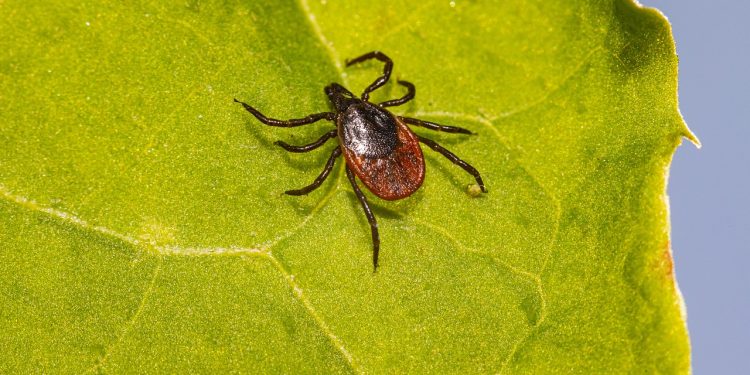Fleas and ticks are not only a nuisance but also a significant health risk for pets. These parasites can cause itching, skin infections, and even transmit diseases such as Lyme disease and Rocky Mountain spotted fever. Protecting your pet from fleas and ticks is essential to their overall well-being. Here’s an in-depth look at the best prevention methods to keep your furry companions safe and comfortable.
Understanding Fleas and Ticks
What Are Fleas?
Fleas are tiny, wingless insects that feed on the blood of animals. They multiply rapidly, making early detection and prevention critical. Flea infestations can lead to anemia, allergic reactions, and tapeworms.
What Are Ticks?
Ticks are arachnids that latch onto animals to feed on their blood. They are notorious for transmitting diseases such as Lyme disease, Ehrlichiosis, and Babesiosis.
Prevention Methods
Topical Treatments
Topical treatments are among the most popular flea and tick preventatives.
- How They Work: These treatments are applied directly to your pet’s skin, usually between the shoulder blades. They kill and repel parasites for a set period, typically one month.
- Popular Brands: Look for vet-recommended products such as Frontline, Advantage, or Revolution.
- Tips for Application:
- Follow the package instructions carefully.
- Avoid bathing your pet for 48 hours before and after application to ensure effectiveness.
Oral Medications
Oral medications are convenient and highly effective at preventing fleas and ticks.
- How They Work: These medications are ingested by your pet and work by killing parasites when they bite.
- Advantages:
- Long-lasting protection, typically up to three months.
- No risk of washing off during baths or swimming.
- Popular Options: Products like NexGard, Bravecto, and Simparica are widely used and recommended.
Collars
Flea and tick collars provide continuous protection for extended periods.
- How They Work: These collars release active ingredients that repel and kill fleas and ticks.
- Duration: Many collars last for up to eight months, making them a cost-effective option.
- Considerations:
- Ensure the collar fits snugly but comfortably.
- Check for irritation around the neck periodically.
Sprays and Shampoos
Sprays and shampoos offer immediate relief from fleas and ticks.
- How They Work: These products kill fleas and ticks on contact and can be used as part of a broader prevention plan.
- Best Uses:
- Sprays are ideal for spot treatments or when venturing into high-risk areas.
- Shampoos can help eliminate existing infestations during baths.
Environmental Control
Managing your pet’s environment is key to preventing infestations.
- Indoor Measures:
- Vacuum carpets, furniture, and pet bedding regularly.
- Wash bedding and toys in hot water to kill fleas and eggs.
- Use flea sprays or foggers to treat the home if necessary.
- Outdoor Measures:
- Mow the lawn and trim bushes to reduce tick habitats.
- Treat your yard with pet-safe insecticides or diatomaceous earth.
Natural Remedies
For those who prefer chemical-free options, natural remedies can provide some level of protection.
- Essential Oils: Certain essential oils like cedarwood or rosemary can repel fleas and ticks. Always dilute them properly and consult your vet before use.
- Apple Cider Vinegar: Adding a small amount to your pet’s water or using it as a diluted spray may deter fleas.
- Diatomaceous Earth: This natural powder can be sprinkled on carpets or pet bedding to kill fleas by dehydrating them.
Recognizing Flea and Tick Problems
Signs of Fleas:
- Excessive scratching, biting, or licking.
- Red, inflamed skin or scabs.
- Black specks (flea dirt) on your pet’s fur.
Signs of Ticks:
- Visible ticks attached to the skin.
- Unexplained lethargy or fever.
- Small, hard lumps under the skin where ticks may be embedded.
Steps to Take if You Find Fleas or Ticks
- Remove the Tick:
- Use tweezers or a tick removal tool to grasp the tick close to the skin.
- Pull steadily and avoid twisting.
- Clean the area with antiseptic.
- Treat the Infestation:
- Bathe your pet with flea shampoo.
- Use a flea comb to remove fleas and eggs.
- Apply a fast-acting topical or oral treatment.
- Consult Your Veterinarian:
- Seek advice for severe infestations or if your pet shows signs of illness.
Preventative Care Schedule
Consistency is key to keeping fleas and ticks at bay. Create a schedule to ensure regular application of preventatives and maintenance of your pet’s environment.
- Monthly: Apply topical treatments or give oral medications.
- Weekly: Wash pet bedding and vacuum thoroughly.
- Seasonal: Treat your yard and check for ticks after outdoor activities.
Protecting Different Types of Pets
- Dogs: Regularly check for ticks after walks, especially around the ears, neck, and between toes.
- Cats: Indoor cats are not immune to fleas and ticks, especially if you have other pets. Use products specifically designed for cats.
- Small Animals: Consult your vet for appropriate flea prevention methods for rabbits, guinea pigs, or ferrets.
By adopting a proactive approach and staying consistent with prevention methods, you can keep your pet free from fleas and ticks year-round. Protecting your furry friend from these pests ensures their comfort, health, and happiness.












